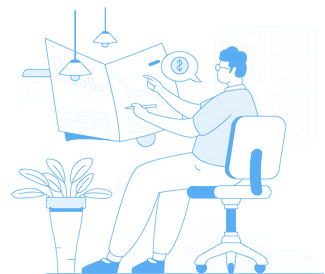What Does Ageism Look Like in the Workplace?
Ageism in the workplace can take many forms, some subtle and others overt. It can occur during hiring, promotion, training, or even in daily interpersonal interactions. Older employees may face stereotypes such as being 'resistant to change,' 'less tech-savvy,' or 'less ambitious,' while younger workers might be dismissed as inexperienced or immature.
Ageism is when someone is stereotyped or subjected to discrimination because of their age. While it can affect people at any age, in the workplace context, it most often impacts older professionals who may be overlooked in favor of younger candidates or treated unfairly due to assumptions about their abilities, productivity, or adaptability.
As organizations push toward inclusivity and diversity, ageism in the workplace remains a significant challenge. Combating it requires both awareness and action, especially from HR professionals who are responsible for promoting fair and unbiased employment practices.
Common signs of ageism include
- Biased hiring practices: Preferring younger candidates even when older applicants are equally or more qualified.
- Promotion bias: Overlooking older employees for leadership or advancement opportunities.
- Workplace jokes or language: Comments like 'too old to keep up' or 'fresh energy needed' that imply age-based limitations.
- Reduced responsibilities: Gradually shifting critical tasks away from older workers without cause.
- Training exclusion: Denying access to upskilling opportunities, assuming older employees are less interested in learning.
Ageism can lead to reduced morale, disengagement, and even attrition among seasoned professionals, impacting organizational knowledge and stability.
How Can HR Identify Signs of Age Discrimination?
When it comes to identifying and resolving age-related prejudices, human resources are essential. Early detection of ageism can help organizations avoid legal problems and promote an inclusive atmosphere.
1. Uneven Hiring Patterns
If job openings consistently favor younger applicants despite older candidates meeting or exceeding requirements, it may signal bias.
2. Feedback and Performance Reviews
Watch for language in reviews that focus more on age-related assumptions than actual performance.
3. Training and Development Gaps
Are older employees being left out of digital learning or leadership programs? HR should track participation by age group.
4. Voluntary Exits by Senior Employees
If a pattern of resignations or early retirements emerges among older staff, investigate the reasons through exit interviews.
5. Complaints or Grievances
Anonymous surveys and open-door policies can help employees report age-based harassment or unequal treatment.
Proactive monitoring of workforce data, inclusive policies, and awareness training for managers can help HR address potential issues before they escalate.
Is Ageism Illegal in Hiring and Employment?
Yes, ageism is illegal in many countries, including India, though the specifics of legal protection vary. In general, discrimination based on age during recruitment, training, promotion, or termination is prohibited.
Legal context in India
While India does not have a specific law solely addressing ageism, age-based discrimination can fall under broader employment and equality laws. The Constitution of India guarantees equality before the law (Article 14) and prohibits discrimination (Article 15), which can be extended to cover age bias in some cases.
Internationally
- In the United States, discrimination against individuals 40 years of age or older in the workplace is illegal under the Age Discrimination in Employment Act (ADEA).
- In the United Kingdom, the Equality Act 2010 forbids age discrimination towards employees, job applicants, and trainees.
HR teams should ensure that recruitment, performance evaluation, and compensation practices are aligned with anti-discrimination laws. This includes avoiding age-related questions during interviews or mandating retirement ages without justified grounds.
What Can Companies Do to Prevent Ageism at Work?
Creating an age-inclusive workplace requires intentional policy development, leadership commitment, and an open organizational culture. Here's how companies can proactively prevent ageism:
1. Implement Age-Neutral Hiring Practices
Remove age-indicative questions from applications (like date of birth or graduation year) and use structured interviews to focus solely on skills and experience.
2. Promote Intergenerational Collaboration
Encourage groups of people of different ages to collaborate on projects and exchange information, dispelling myths and promoting respect for one another.
3. Provide Equal Access to Training
Ensure employees of all age groups have access to upskilling and learning opportunities, including digital and leadership development.
4. Train Managers and HR Teams
Conduct training to identify unconscious biases and promote age-inclusive language and behavior throughout the organization.
5. Encourage Inclusive Language
In job descriptions, steer clear of terms like 'young and dynamic.' Use neutral, inclusive phrasing such as 'experienced professional' or 'adaptable team player.'
6. Monitor and Evaluate Progress
Collect data on promotions, training access, and turnover by age group to identify trends and adjust strategies accordingly.
7. Support Flexible Working Arrangements
Older employees may value flexibility in work schedules. Providing such options can help retain talent and reduce retirement pressure.
A strong HR policy should emphasize diversity across age groups and align with broader organizational DEI (Diversity, Equity, and Inclusion) efforts.
Ageism is not just a social issue; it's a workplace issue that impacts productivity, morale, and legal compliance. Recognizing and addressing age-based bias is essential for building a diverse and high-performing workforce. HR professionals must take the lead in creating policies, training programs, and hiring practices that uphold fairness and tap into the unique strengths of employees across all age groups.
Qandle's HRMS platform helps HR teams create equitable, bias-free workplaces. From tools that utilize data for hiring to organized performance evaluations and templates for inclusive policies, Qandle assists you at every stage of your DEI journey.
Book a free demo today and transform the way your organization approaches fairness and inclusion.


 Back to Glossary
Back to Glossary